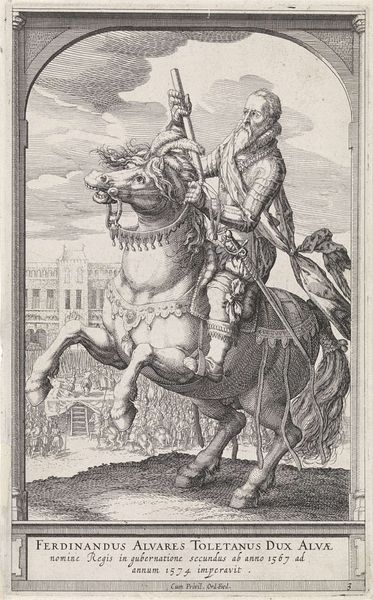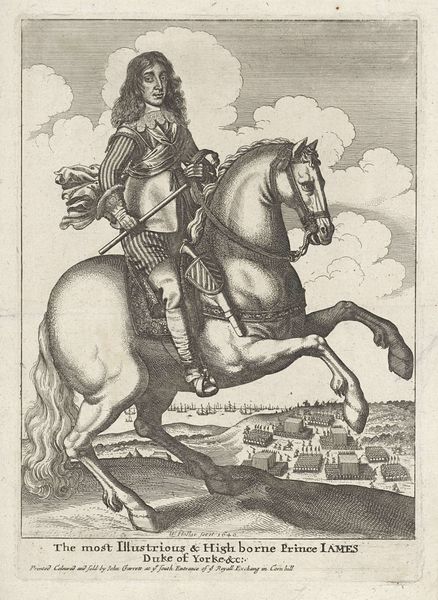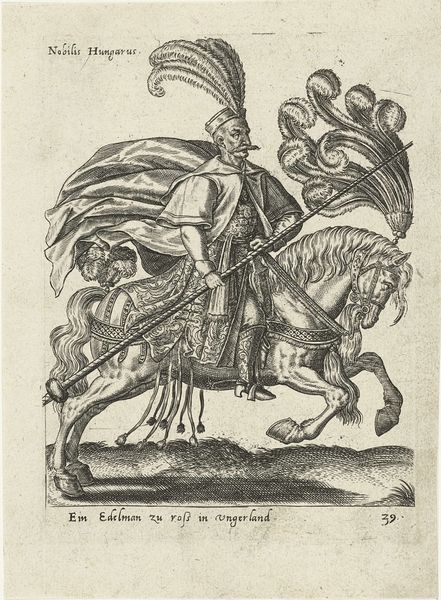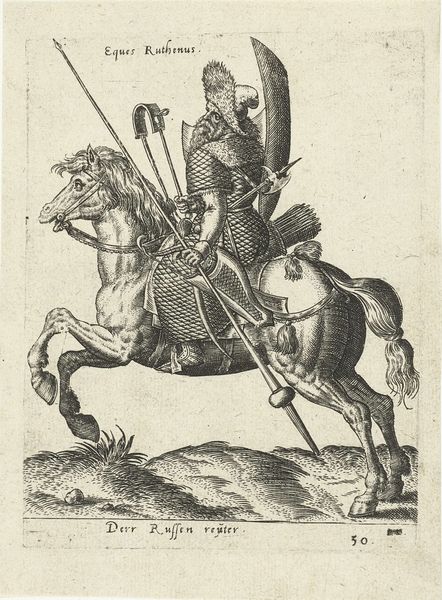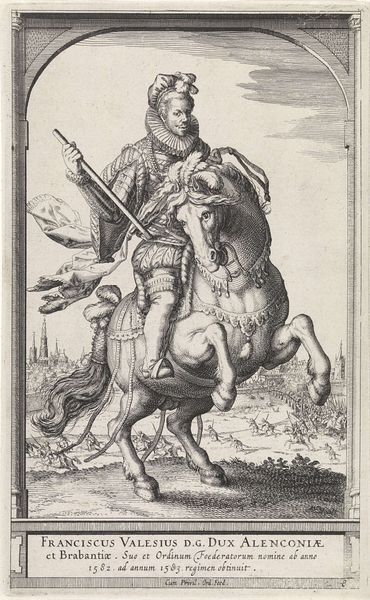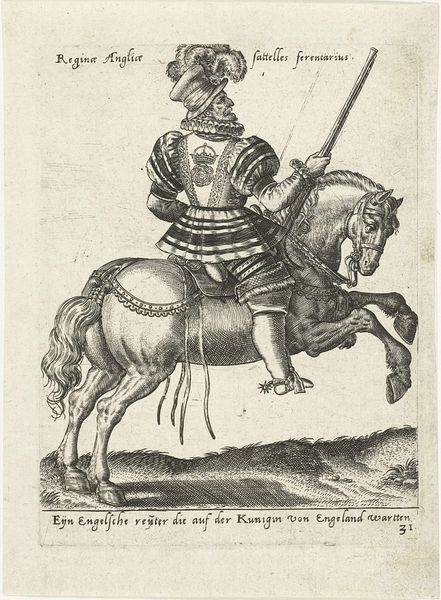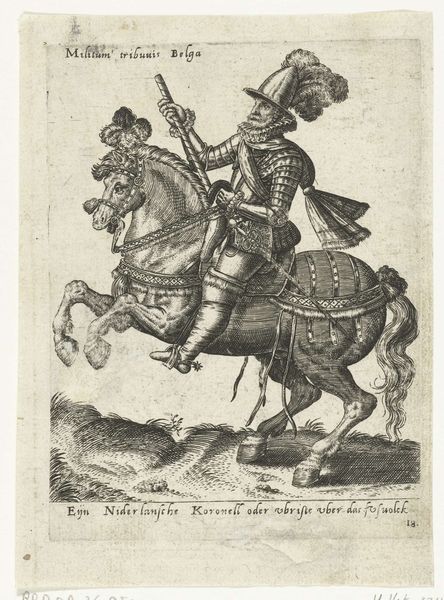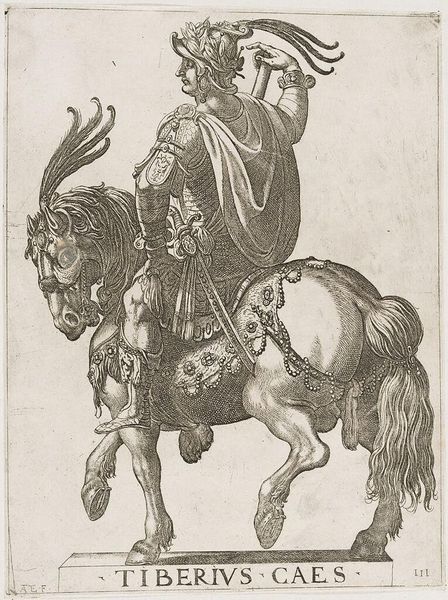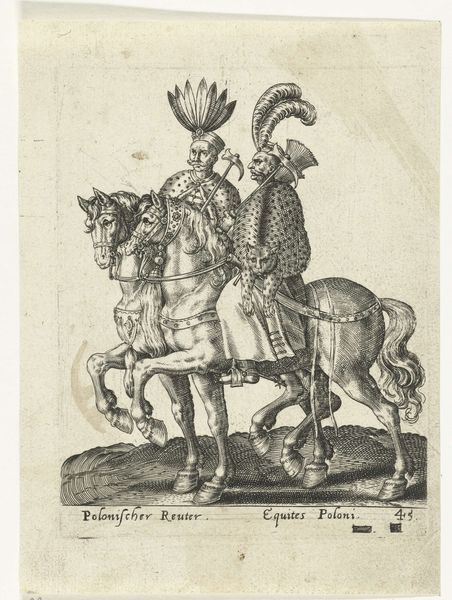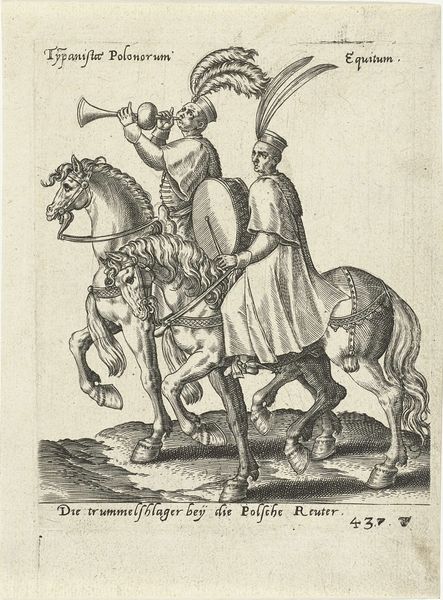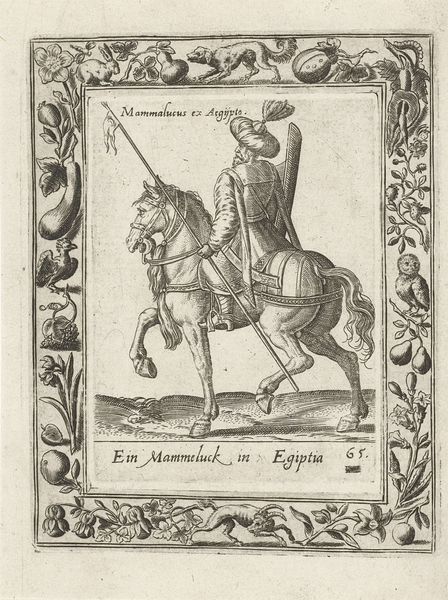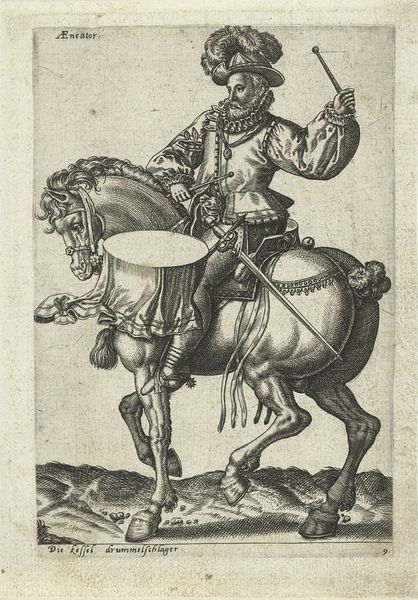
print, engraving
#
portrait
#
baroque
# print
#
old engraving style
#
history-painting
#
engraving
#
erotic-art
Dimensions: width 157 mm, height 254 mm
Copyright: Rijks Museum: Open Domain
Editor: Here we have "Ruiterportret van Don Juan van Oostenrijk," or "Equestrian Portrait of Don Juan of Austria," a print dating from 1591 to 1632, housed here at the Rijksmuseum. It's really striking how dynamic the composition is for a portrait; there’s almost a sense of controlled chaos in the background scene. What’s your take on this piece? Curator: It's a compelling example of how printmaking served specific political functions. Think of this less as objective documentation, and more as carefully constructed propaganda. Who was Don Juan, and how did the artist, Hessel Gerritsz, portray him? The equestrian portrait was usually reserved for royalty or high-ranking nobility, right? Editor: Absolutely. And Don Juan was the illegitimate son of Holy Roman Emperor Charles V, and a military leader. But I hadn't considered its use as propaganda so explicitly. Curator: Consider the context: this print comes after Don Juan's death, when his reputation needed bolstering. Gerritsz's portrayal isn't just celebratory; it is deliberately shaping Don Juan's image for posterity. The engraving medium itself is crucial here. Prints allowed for widespread distribution, so his image would have reached a broad audience. The battle scene depicted suggests not chaos, but justified power. Do you agree? Editor: Yes, I see what you mean. The artist emphasizes control. And creating many copies is inherently political because it speaks to dissemination of power. Curator: Exactly! Gerritsz used printmaking to disseminate a specific narrative, constructing a heroic identity and reinforcing social and political hierarchies in a way painting couldn't at the time. Editor: So, beyond just a portrait, it is a tool for shaping public perception. Fascinating. It's helpful to understand how something like an engraving could be such a powerful form of communication and manipulation! Curator: Indeed. Studying this piece reminds us that art always operates within, and often actively shapes, its historical and political context.
Comments
No comments
Be the first to comment and join the conversation on the ultimate creative platform.
